#world trade center 2001
Explore tagged Tumblr posts
Text
The Game of Common Interests: The Symbiotic Relationship of Terrorism and The Media
Mass media and terrorism have developed an interdependent relationship. The media is the terrorist’s breath of fresh air, and it is the lifeblood and sustenance of terrorism, where the media often capitalizes on the public's confusion, intrigue, and paranoia following terrorist attacks by producing sensationalized news that captures widespread attention. This dynamic, however, plays into the hands of terrorists, who exploit the extensive coverage to spread the agency of their extremist agendas and beliefs, particularly targeting and influencing vulnerable audiences, such as the youth. Professor Taha Najem of Naif Arab University had described this relationship as “symbiotic”.
In Najem's own words:
"As for the extremists, they precisely calculate the scope, location, and timing of their attacks to generate ample media attention,—or in other words, to generate advertisements for their messages on a global scale. The broader and more prolonged the media coverage of terrorism turns out to be, the greater the terrorists' feelings of accomplishment, influence, and power." (Najem, 2017).
Bruce Hoffman, the Director of the Center for Security Studies at Georgetown University said:
"Only by spreading the terror and outrage to a much larger audience can the terrorists gain the maximum leverage potential."
Najem argues that the relationship between the two can be understood through the media's tendency to capitalize on horrific tragedies. It often uses these as newsworthy scoops that not only provide information but also serve as marketing opportunities and profitable publicity. In some instances, the media may unintentionally promote terrorist operations by offering excessive coverage, which is driven by their own incessant need for fame, power, money, and influence. This aligns with the perpetrator's likeness, where some stage attacks often with the sole purpose of gaining publicity and creating propaganda rather than resolving political demands.
Researchers have established that media coverage is pivotal to the success of terrorist attacks, with the scope and intensity of coverage often being more important to terrorist groups than the quality of the reporting. However, this perspective can also be overly simplistic, as it overlooks the complex relationship between media coverage and public reaction. It also fails to consider that not all terrorists prioritize publicity over their other tactical or political aims. Additionally, the complex interplay between the media and terrorism cannot be fully understood without considering the role of the state.
Not only does this occur in mass media, but also creating trends within specific online communities. From this, we can see how there is a benefit in both parties: terrorists gain the publicity they desire, while the media profits from the heightened public interest, increasing the influx of coverage because of the heightened value. Furthermore, many individuals drawn into terrorism have been influenced by channels, websites, magazines, and other forms of media that promote bombings and suicide missions, highlighting the powerful role media can play in the recruitment and radicalization process. With this, here are some ways in which the media benefits terrorism, and vice-versa. Allowing media prevalence through marketability and terrorism through radicalization.
World Trade Center Bombing, 2001.
On September 11, 19 terrorists from al-Qaeda hijacked and attacked the World Trade center, following four coordinated bombing-suicide attacks against the U.S. There were 2,996 deaths and approximately 6,000 injured. Over the past two decades after the attack, mainstream media audiences have witnessed a significant shift in how news was presented: the rise of dramatic and emotional storytelling, or what can be termed as "public drama."

This approach has increasingly dominated the media landscape, being a central focus on various platforms: lead stories on news programs, main broadcast discussions, and bold headlines on newspapers. This had become a prominent framework for delivering news, particularly in television, due to its entertainment-like qualities. By simplifying complex stories into easily-digestible and compelling narratives with vivid images, the audience is more engaged. News organizations and media professionals favor this dramatic approach because of the direct and cost-effective production.
The 9/11 attack is a prime example of this trend. When news broke of a plane crashing into the World Trade Center, broadcasters were initially unprepared for the unfolding catastrophe and the dramatic and chaotic nature of the events presented challenges in conveying the news. With initial coverage featuring footage of billowing flames and smoke from the collapsed towers, the explosion of the Pentagon, and the emergency response—all were easily committed into the viewer's memories. These images captured the raw scale of the disaster and its immediate aftermath. The people were confused, afraid, and intrigued—then they became invested. Thus, the sensationalization of news was adapted.
Oklahoma City Bombing, 1995.
On April 19th, just the second anniversary of the end of the Waco siege, domestic terrorists Terry Nichols and Timothy McVeigh detonated a nitrate-fuel oil bomb in the Alfred P. Murrah Building, claiming 168 lives and injuring 680 others.
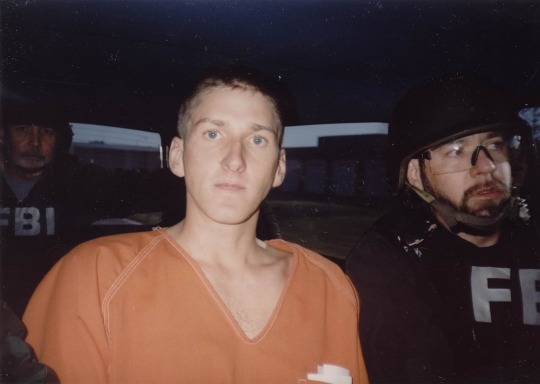

Timothy McVeigh was one of America’s most notorious domestic terrorists, and with his involvement with the crime, he was then sentenced to death by lethal injection. In June 2001, the Federal Bureau of Prisons was responsible for the execution of McVeigh. Linda Smith and John Roberts, in their journal article, delve into one significant instance where media demands placed a heavy burden on the Federal Agency. During this time of McVeigh's execution, the Bureau faced a difficult dilemma: balancing the need to facilitate media coverage of the execution while ensuring the safety and security of the maximum-security penitentiary where it was conducted.
This situation highlights a broader paradox faced by many federal agencies. They are tasked with providing information to the media while simultaneously navigating ethical, budgetary, and legal constraints that limit their engagement in traditional public relations activities, such as advertising and lobbying, common in the private sector. Public affairs officers are legally obligated to release non-sensitive information, yet they must carefully avoid disclosing material exempt under the Freedom of Information Act and Privacy Act, as individual officers can be held criminally liable for such breaches. This tension between transparency and security underscores the complex challenges these agencies must navigate in their public communications.
Boston Marathon Bombing, 2013 and INSPIRE MAGAZINE.
On April 15th, exactly on America's Patriot's Day, Tamerlan and Dzhokhar (Jahar) Tsarnaev detonated two pressure cooker bombs at 2:49 p.m., just a few of hours after the winner completed the Boston Marathon, totaling to 6 deaths and 281 injuries.

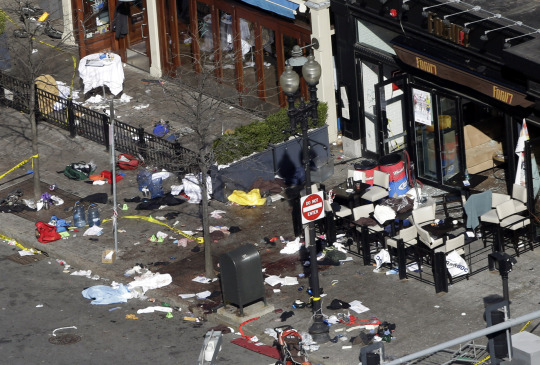
Jahar had a fascination with fireworks and explosives, while Tamerlan exhibited early signs of radicalization. Although there were no proper links of the two to terrorist groups, Jahar had revealed that the two obtained plans from Inspire, specifically its first issue revealing a step-by-step recipe on creating pressure cooker bombs or Improvised Explosive Devices (IEDs).
Inspire is an English online magazine published by al-Qaeda in the Arabian Peninsula (AQAP), infamously known as the group that perpetrated the 9/11 and PAL 434 attacks. The magazine is one of the many ways AQAP spreads its online agenda. Both international and domestic extremists have been motivated by radical interpretations of Islam and, in some cases, used its bomb-making instructions in their attempts to carry out attacks.
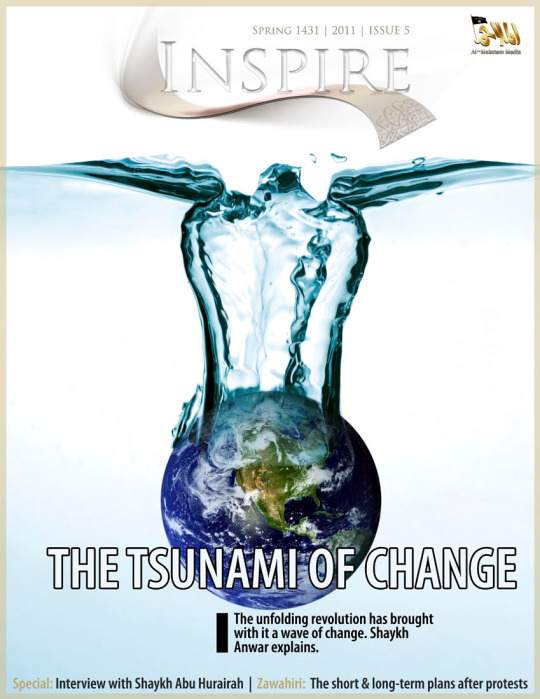


The insurgence of the 'Jihadi John Slideshow Trend'
During the period of 2014, youtube videos uploaded by the Islamic State of Iraq and Syria (ISIS) started surfacing on the internet. This was characterized by a series of masked militants criticizing the American or British government and then tying in the statements by the gruesome beheadings of hostages, ransoms, and soldiers.
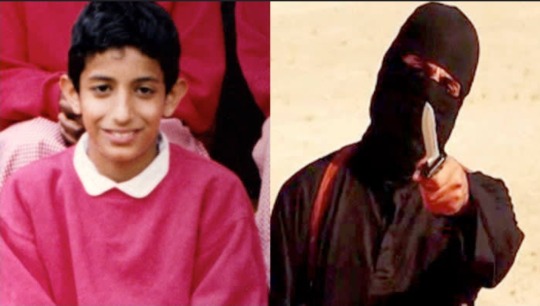
Terrorists had often used their media presence as a driving force to influence the youth into affiliating themselves with terrorist ties. One of these was Jihadi John, unveiled as British militant and Kuwaiti-born Mohamed Emwazi. In these videos, Emwazi is often seen looming over the camera holding a knife and standing next to a kneeled hostage. He ends every video by beheading his victims. One of his most famous videos was the beheading of American Journalist James Foley.
Around June 2010, Emwazi was detained and in the middle of 2020, the insurgence of the “Jihadi John Slideshow” trend had reached tiktok. While the origins of this trend still remains obscure, this has left a lasting impact on the youth. Often, the demographic consisted of teens, specifically young males, who romanticized and glorified the acts of violence portrayed by Emwazi and the aesthetic of militaristic weaponry. Many had credited this behavior to “edgy” standards and humor, however, this idealism was proven to be more unironic than it seemed. Eventually, in the proceeding years, the trend had died out, however, it had came back a few times during period intervals of 2022 to 2023.
This trend had also harmfully villainized harmless ideologies, distorting these ideas to the point where it is repulsing for the public’s perception. An example of this is the concept of Jihad, where it is essentially the Islamic philosophy of struggling to defend the religion and attaining peace within the community and outside of it. It promotes the unity and solidarity of individuals where militaristic action is only done as a last resort of intervention. Often, Jihadi groups such as al-Qaeda and ISIS have spread distorted and extremist versions of this ideology, creating a brand new concept of utilizing violent militaristic resistance to protect Islam. With this dangerous approach, muslim communities are stigmatized, discriminated against, and stereotyped. This is especially harmful because it is a large problem that affects the community in various ways, especially when terrorists rebrand concepts initially striving to attain peace as acts of hatred and war, tainting a beautiful religion with images of violence.
Conclusion
Circling back to Prof. Najem’s analysis, without the media’s attention and focus, terrorists are unable to achieve any of the following four objectives: (1) recognition of the group name or ideology, (2) ability to communicate with supporters, (3) communicate with members of the local government, (4) and depict itself as a legitimate political alternative to the current governments. To conclude this essay, the relationship between mass media and terrorism is a complex and interdependent one, where the intricacies of both entities should be carefully observed and analyzed to unravel the deeper connections between the two.
While some researchers argue that media coverage is essential for the success of terrorist attacks, this view is sometimes overly simplistic and does not fully capture the intricate relationship between media portrayal and public reaction. Additionally, not all terrorist groups prioritize publicity over their other objectives. The symbiotic relationship between the media and terrorism is further complicated by the role of the state, which must balance transparency with security.
Several case studies, including the Oklahoma City Bombing, the Boston Marathon Bombing, and the rise of figures like Jihadi John, highlight the ways in which media coverage can both shape and be shaped by terrorist actions. These examples demonstrate how terrorist groups leverage media to spread their message and recruit new members, while the media, in turn, benefits from the increased attention and revenue generated by such coverage.
Ultimately, this relationship underscores the powerful role that the media plays in both perpetuating and combating terrorism. The challenge lies in finding a balance between reporting news and preventing the unintentional promotion of extremist ideologies.
#understandnotcondone#oklahoma city 1995#timothy mcveigh#world trade center 2001#boston marathon 2013#jahar tsarnaev#tamerlan tsarnaev#jihadi john#mohamed emwazi#trrsm
87 notes
·
View notes
Text
Post 9/11 Trivia
Most folks on this site were either children on September 11, 2001, or weren’t even born yet. But America went crazy for about a year afterwards. Here’s some highlights that I remember that might not be in your history books:
There was national discussion on whether or not Halloween should be canceled because…fuck if I know why. After planes crashed into buildings in NYC it follows that 6-year-olds in Iowa shouldn’t be allowed to dress up like Batman and ask their neighbors for candy, I guess. (Halloween wasn’t canceled, by the way.)
On a similar note, people asked if comedy - any sort of comedy - was appropriate anymore, ever.
People sold shitty parachutes to suckers “in case your building gets attacked and you have to jump out the window.” There were honest-to-God news reports warning people not to jump out of the window with shitty mail-order parachutes because they wouldn't work.
As a follow-up to the attacks, someone mailed anthrax to some prominent politicians and news anchors - you know, famous people - along with some badly-written notes about “you cannot stop us, death to America, Allah is good” and after that every time some random dumbass found a package in the mail they didn’t recognize they thought that the terrorists were targeting them, too.
Everyone was similarly convinced that their town was going to be the next target, even if they were a little town in the middle of nowhere. "Our town of Bumblefuck, South Dakota (population 690) has the largest styrofoam pig statue west of the Mississippi! Terrorists might fly planes into that too! It's a prime target!"
People started taping up their windows and trying to make their houses or apartments airtight out of fear of chemical and biological attacks. There were news reports warning people that turning your house into an airtight box was a bad idea because, y'know, you need air to breathe.
"[X] supports terrorism!" and “if we do [X], the terrorists win!” were used as arguments for everything. "Some rich Arab you never heard of donated to his organization that backs Hamas which backs al-Queda, and also owns stock in a holding company that has partial ownership of the Pringles company, so if you eat Pringles you're supporting terrorism!" "The terrorists want to tear down our freedoms and our way of life and rule us through fear! Eating what you want is one of our freedoms as Americans! If you're afraid to eat Pringles, the terrorists win!" (I promise you that this sort of argument is in no way hyperbole.) (This argument is how Halloween was saved, by the way. “If we cancel Halloween, the terrorists win!”)
People worked 9/11 into everything, and I mean everything, whether it was appropriate or not. If you went to the grocery store the tortilla chips would remind you to support the troops on the packaging. Used car sales would be dedicated to our brave first responders. You couldn't wipe your ass without the toilet paper rolls reminding you to never forget the fallen of 9/11, and again, this is not hyperbole. My uncle, who lived in Ohio and had never been to New York except to visit once in the 70′s, died of a stroke about 8 months after 9/11, and the priest brought up the attacks at the eulogy.
On a similar local note, on the day of 9/11, after the towers went down, gas stations in my home town immediately jacked up gas prices. The mayor had the cops go around and force them to take them back down. I doubt any of that was legal.
Before 9/11, Christianity in America - and religion in general - was on a downward swing, with reddit-tier atheism on the upswing. Religion was outdated superstition from a bygone age. The day after 9/11? Every single church was PACKED. (This wasn't a bad thing, but the power-hungry on the Evangelical Right saw this as a golden opportunity to grab power and influence.)
EDIT: By Popular Demand - Freedom Fries. I initially left these off because they came a couple years after the initial panic and most people thought they were kind of absurd (and I don't recall anyone really going along with it other than maybe some local diners here and there). France didn't want to get involved in our world policing so some folks were like "TRAITORS!" and wanted to call french fries "Freedom Fries" instead, so as to stick it to the French.
Besides dumb shit like that…it’s really hard to overstate how completely the national mood and character changed in the span of a day, or how much of the current culture war is a result of the aftermath. (9/11 was the impetus for the sharp rise in power of the Evangelical Right, who made themselves utterly odious and the following backlash helped the rise of the current Progressive Left, for instance.)
And if all of this seems batshit...well, it was. But I want you to think for a moment how people react today over even trivial shit. People send death threats over children's cartoons. They call for blood if the maker of a video game had an opinion they don't like. If someone made a racist joke a decade ago when they were a teenage edgelord, folks will go after people who even associate with them. "DON'T YOU UNDERSTAND ALL THE HARM THEY'RE DOING!?"
Now take that same level of over-the-top histrionics and apply it to the unprecedented event of passenger planes crashing into crowded buildings in America's most populous city and killing thousands of people all at once. "DON'T YOU UNDERSTAND THAT WE WERE ATTACKED!?"
18K notes
·
View notes
Text
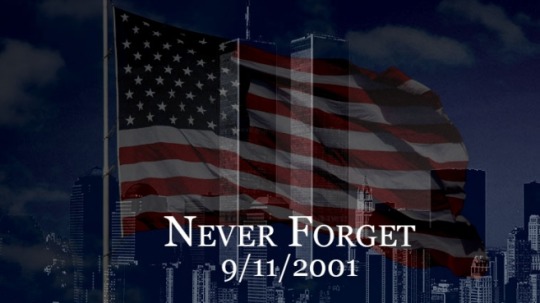
116 notes
·
View notes
Text
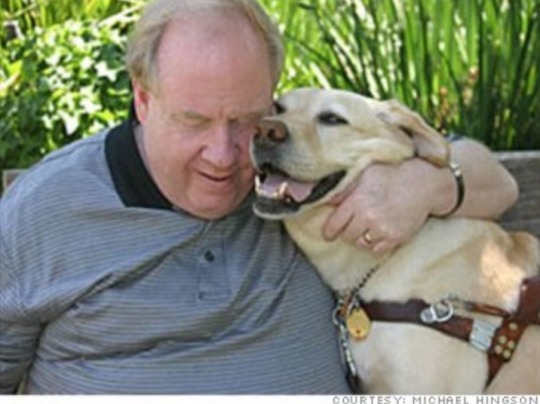
Michael Hingson was in Tower One of the World Trade Center on the morning of 11 September 2001.
What sets his story apart is that Hingson is blind and was guided to safety by his guide dog, Roselle.
They were on the 78th floor when the plane hit.
Despite the chaos, Roselle remained calm, leading Hingson and several others down 1,463 steps to safety. The descent took about an hour.
Remarkably, just moments after they exited the building, Tower Two collapsed, covering them in debris. Both survived.
Hingson later said:
"While everyone ran in panic, Roselle remained totally focused on her job, while debris fell around us, and even hit us, Roselle stayed calm."
Once clear, Roselle led her owner to the safety of a subway station, where they helped a woman who had been blinded by falling debris.
Once they arrived home, Roselle immediately began playing with her retired guide dog predecessor, Linnie, as if nothing important had happened.
Hingson's story became widely known as an extraordinary tale of trust, teamwork, and the human-animal bond.
He later wrote a memoir, "Thunder Dog," detailing his experience.
In 2004, Roselle was diagnosed with immune-mediated thrombocytopenia, but medications were able to control the condition.
In March 2007, she retired from guiding after it was discovered that the medication was beginning to damage her kidneys.
Roselle passed away on 26 June 2011 at age 13.

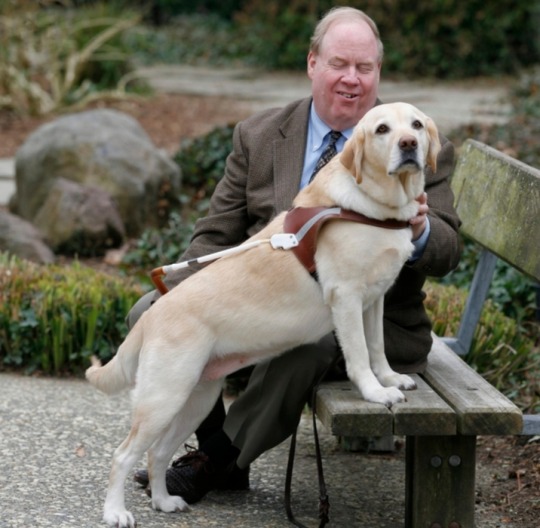
Roselle (March 12, 1998 - June 26, 2011)
#Roselle#Labrador Retriever#guide dog#Guide Dogs for the Blind#PDSA Dickin Medal#Dickin Medal#Worl#Michael Hingson#World Trade Center#Twin Towers#11 September 2001#hero dogs#Thunder Dog#9/11
449 notes
·
View notes
Text
The Anniversary: Once More, With Feeling
This year's reflection on the 23rd Anniversary of September 11, 2001.
Now it's the 11th, the 23rd Anniversary of that day.
Each year, I approach this day with caution: I never know how it's going to affect me or in what manner it will manifest, and some years have been brutal, but the past two have seen more blessings come my way than brickbats. The passage of time has helped, as have my ongoing PTSD therapy sessions provided by the World Trade Center Health Program.
This time, I feel as if I'm controlling the event far more than it's controlling me, and I think that's due in large part to the performance art collaboration with the guys in Berlin (the queer performance collective ONCE WE WERE ISLANDS, who are now in Finland north of the Arctic Circle making amazing art and performance on the Finnish government's dime) that's been going on for more than a year, including a three-month research intensive called "Finding Animal" (https://www.oncewewereislands.com/Finding-Animal) over the winter.
Last summer, after they extended the offer of collaboration, they proposed that our work together should focus on how I returned to life and art after losing my Lower Manhattan home that day, along with my entire performance archive and any record of it - it was as if Animal J. Smith had never existed, no record that I had done or been anything at all. I was shocked at their proposal, to be honest, but their idea for collaboration was persuasive: that my story was bigger than just me, that it had resonance in a larger way about the survival and meaning of queer art and artists, about whether it's possible to recover from the worst thing in the world. So, as our work continues, I think that my being compelled to examine my long road back as both participant and observer through a performative/creative lens has synthesized much of what I had left unexamined, forgotten, buried, denied, absorbed, leading to clarity about who I am today, how it affected, shaped, changed me, and whether I have in fact "recovered" from this giant detour, this dinosaur-extinction-level meteor that got dropped on my life plan.
I don't have an answer yet, I'm still writing and making art about it, but as I mark 23 years today, I can say that sticking it out all these years has been the right thing to do, that I intend to continue waking up each day and engaging with life.
I am alive, and I am fine.
#treats are always a possibility#information gladly given#animal j. smith#september 11 2001#9/11 survivor#9/11 recovery#world trade center#i am alive#i am fine
49 notes
·
View notes
Text
27 notes
·
View notes
Text






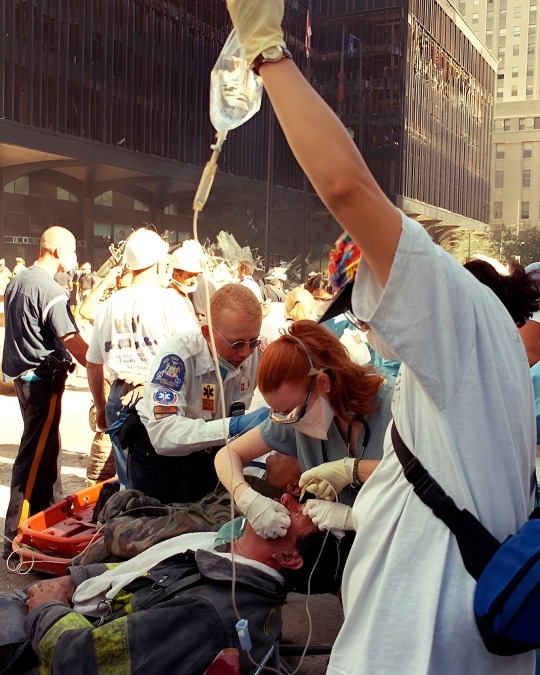
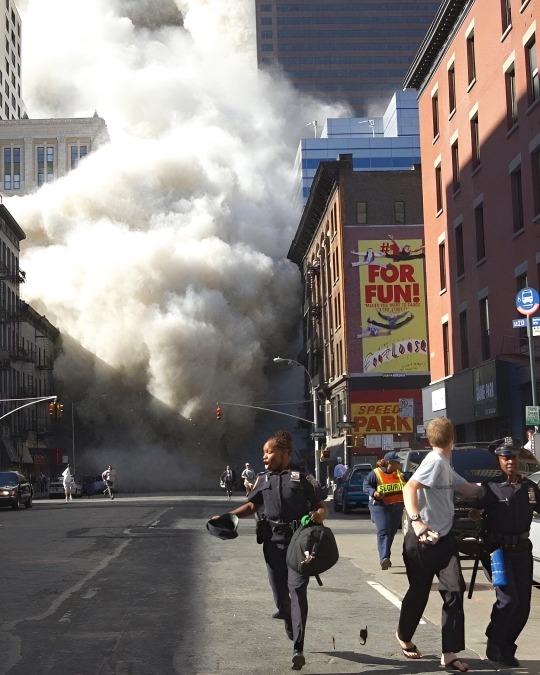
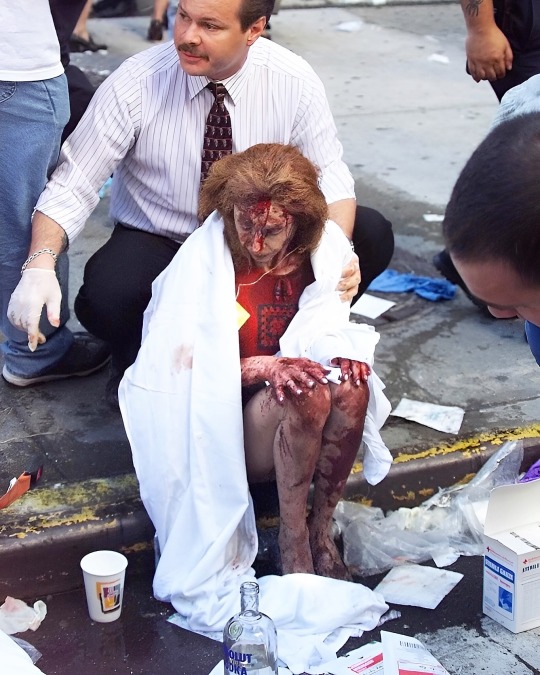

After effects of World Trade Center attacks on September 11th, 2001
https://www.instagram.com/share/BAEJnMcul0
#archive page#explore page#curatethewav#explore#moodboard#awge#fypシ゚viral#world trade center#bush#9/11#ground zero#tw 9/11#twin towers#nyc#al qaeda#2001#neverforget#new york#memorial#building#tower#twintower#honor#architecture#nyc architecture#big Apple#America#USA#fruitstandnyc#september 11th
11 notes
·
View notes
Text

Never forget... September 11, 2001
18 notes
·
View notes
Text

#9/11#Statue of Liberty#New York#New York City#world trade center#World Trade Center (1973–2001)#If there's one place in the world I would have liked to have visited#it's New York and the World Trade Center. It reminds me of São Paulo#but thousands of times bigger!
19 notes
·
View notes
Text
At the World Trade Center Plaza there was actually a music festival happening the week of September 11th 2001; that’s what the colorful banners were and the stage.
Nobody saw this coming. I can’t stress enough.



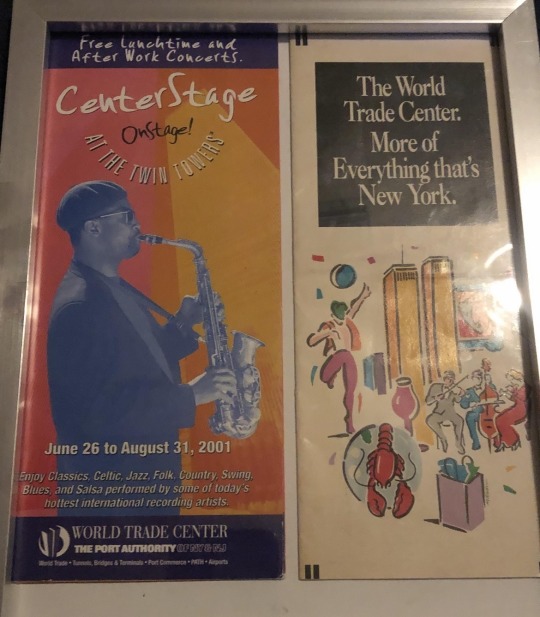
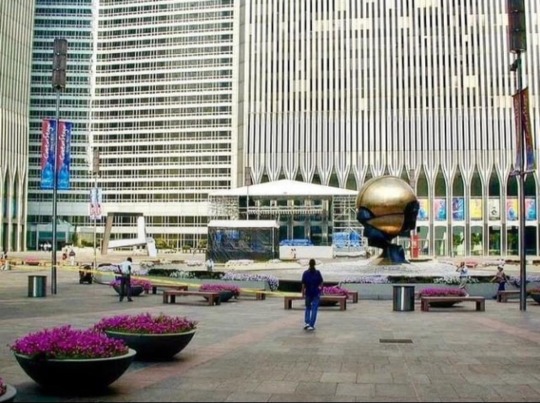





#never forget#9/11#pre 9/11#post 9/11#before and after#world trade center#twin towers#nyc#2001#september 11#world trade center plaza#music festival
10 notes
·
View notes
Text
F-14 FUN FACT OF THE DAY #69
Brian "Moose" Sweeney served in the Navy as an F-14 Tomcat RIO during the Gulf War, having graduated top of his class at the Naval Officers Training School. He served in several squadrons, such as VF-2 Wolfpack and VF-211 Checkmates, even going on to be an instructor at TOPGUN in 1995 and 1996. His callsign was awarded to him as a reference to his impressive stature, measuring 6' 3" and 260 Ibs. Brian's flying career came to a premature end in 1997 when he suffered a neck injury during a maneuver that left him partially paralyzed. He went on to work as an aerospace consultant in the private sector for the Department of Defense and companies like Lockheed Martin. Brian rebuilt two jeeps, one of which was a 1968 Jeepster Commando with an F-14 Tomcat joystick in place of the shifter.
He was a passenger on United Flight 175 flying from Boston to Los Angeles for business when the aircraft was hijacked on 11 September 2001. He was described as being an amazing squadronmate and friend.
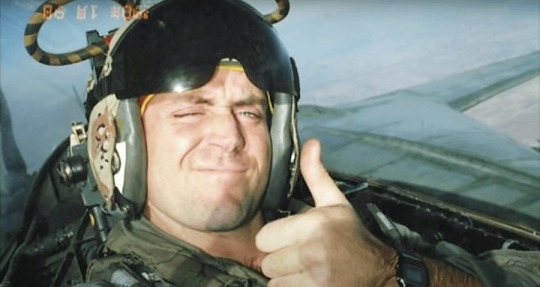

#reading through his legacy.com entries from very recent got me in my feels#f-14 fun fact of the day#fffotd#Brian Moose Sweeney#top gun#Topgun#f-14 tomcat#september 11#September 11 2001#world trade center#fly high moose 🩵
13 notes
·
View notes
Text
" Qualcuno uscí da una tavola calda e cercò di porgergli una bottiglia d’acqua. Era una donna che indossava una mascherina antipolvere e un cappellino con la visiera, e ritrasse la bottiglia e svitò il tappo e quindi gliela tese di nuovo. Lui posò la valigetta per prenderla, a malapena conscio che non stava usando il braccio sinistro, che aveva dovuto posare la valigetta prima di poter prendere la bottiglia. Tre furgoni della polizia svoltarono e si precipitarono verso downtown, a sirene spiegate. Chiuse gli occhi e bevve, e sentí l’acqua scorrergli nel corpo trascinando giú con sé polvere e fuliggine. La donna lo stava fissando. Gli disse qualcosa che lui non sentí, quindi le restituí la bottiglia e raccolse la valigetta. Il lungo sorso d’acqua gli lasciò un retrogusto di sangue. Riprese a camminare. Un carrello del supermercato giaceva immobile e vuoto. Dietro c’era una donna, girata verso di lui, con del nastro della polizia avvolto intorno alla testa e al viso, di quel nastro giallo con la scritta caution che delimita la scena di un delitto. I suoi occhi erano piccole increspature bianche nella mascherina sgargiante, e lei stringeva la maniglia del carrello e se ne stava lí, a guardare dentro il fumo.
Fece in tempo a udire il suono del secondo crollo. Attraversò Canal Street e cominciò a vedere le cose, per qualche motivo, in modo diverso. Non parevano pregnanti come al solito, le strade lastricate, i fabbricati in ghisa. C’era una qualche mancanza cruciale nelle cose intorno a lui. Erano incompiute, per cosí dire. Erano inosservate, per cosí dire. Forse era quello l’aspetto che avevano le cose quando non c’era nessuno che le vedesse. Udí il suono del secondo crollo, o lo avvertí nel tremore dell'aria, la torre nord che cadeva, uno sconcerto sommesso di voci in lontananza. La torre nord che crollava era lui. Il cielo era piú leggero, lí, e riusciva a respirare piú facilmente. C’erano altri dietro di lui, migliaia, che andavano riempiendo la media distanza, una massa prossima a formarsi, gente che fuoriusciva dal fumo. Proseguí finché non dovette fermarsi. Lo investí rapida, la consapevolezza di non poter andare oltre. Provò a dirsi che era vivo, ma era un’idea troppo oscura per riuscire a prendere corpo. Non c’erano taxi e il traffico in genere scarseggiava e allora apparve un vecchio furgoncino, una ditta elettrica di Long Island City, e gli si accostò e il conducente si sporse verso il finestrino dal lato del passeggero a esaminare ciò che stava vedendo, un uomo incrostato di cenere, di materia polverizzata, e gli chiese dove voleva andare. Fu solo una volta salito a bordo e chiusa la portiera che capí dov’era diretto fin dall'inizio. "
Don Delillo, L'uomo che cade, traduzione di Matteo Colombo, Einaudi, 2008. [Libro elettronico]
[Edizione originale: Falling Man, Charles Scribner's Sonspublisher, New York City, 2007]
#Don Delillo#L'uomo che cade#11 Settembre 2001#Stati Uniti d'America#USA#New York City#NYC#Torri Gemelle#terrorismo#letteratura americana contemporanea#XXI secolo#storia contemporanea#imperialismo americano#romanzo#narrativa#letture#leggere#libri#World Trade Center#fondamentalismo islamico#Progetto per un nuovo secolo americano#Project for the New American Century#PNAC#Dick Cheney#Donald Rumsfeld#neocons#Paul Wolfowitz#Donald Kagan#Leo Strauss#neoconservatorismo
7 notes
·
View notes
Text
Remember that Billy and Mandy fan web comic called "Grim Adventures from Down Below" that had a flashback of Mandy causing 9/11 and this came out only a few years after 9/11 happened irl.
#the grim adventures of billy and mandy#grim adventures of billy and mandy#billy and mandy#tgaobam#mandy#grim adventures from down below#web comic#9/11#9/11 joke#tw 9/11#9/11 mention#twin towers#world trade center#september 11#september 11 2001#the twin towers#nine eleven
2 notes
·
View notes
Photo

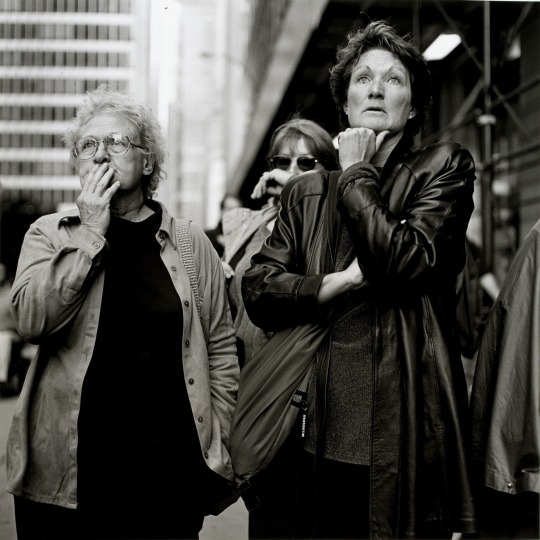
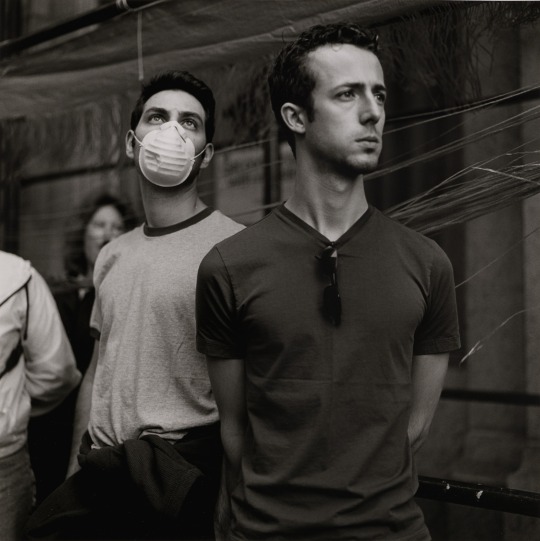


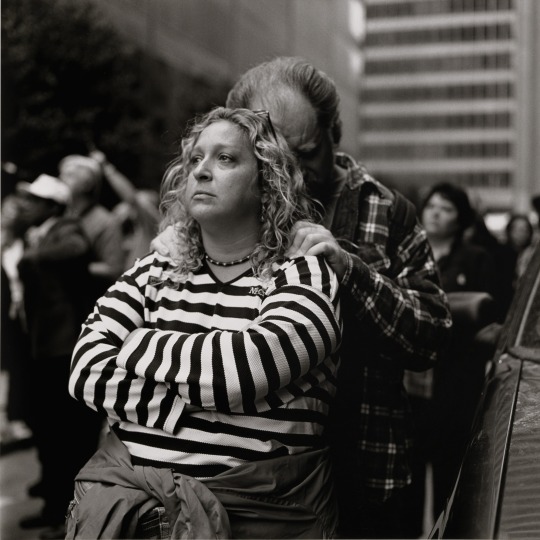
World Trade Center Series, New York City, Kevin Bubriski, 2001
#photography#vintage#vintage photography#kevin bubriski#2001#2000s#black and white photography#street photography#american#new york#new york city#world trade center#9/11#september 11
109 notes
·
View notes
Text
Medical examiner Judy Melinek identified hundreds of 9/11 victims, often from mere fragments of flesh or limbs. In August 2002, nearly a year later, she was called in after a foot bone was discovered atop a skyscraper a fifth of a mile from Ground Zero.

2 notes
·
View notes
Text
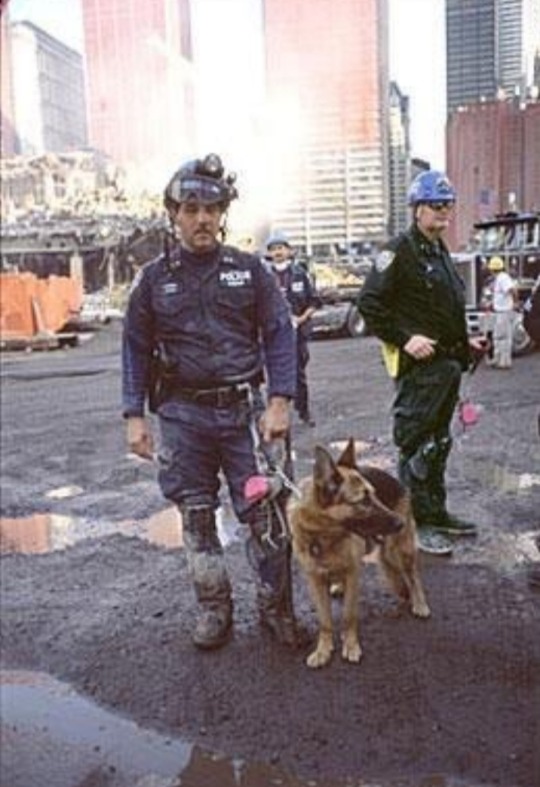
Apollo (1992-2006) was a German Shepherd search and rescue dog who worked with the New York Police Department’s K-9 unit.
Handled by Officer Peter Davis, Apollo was one of the first search and rescue dogs to arrive at Ground Zero on September 11, 2001.
The team arrived just 15 minutes after the collapse of the towers.
The conditions were incredibly hazardous; the air was thick with smoke, dust, and dangerous chemicals. The debris field was unstable.
At one point, Apollo even fell into a pool of water created by the firefighters’ efforts, but he was unharmed and eager to continue his work.
Apollo and his handler worked 18-hour days during the initial stages of the rescue operation, searching for survivors amid the rubble.
The duo was also tasked with locating the remains of those who had perished in the attack, aiding in the difficult process of identification.
In recognition of his bravery, Apollo received the Dickin Medal in 2002, which is often described as the animal equivalent of the Victoria Cross.
Apollo passed away in November 2006, but his legacy lives on as a symbol of the special bond between humans and animals, particularly in times of great need.

The PDSA Dickin Medal was instituted in 1943 in the United Kingdom by Maria Dickin to honour the work of animals in World War II.
It is a bronze medallion, bearing the words "For Gallantry" and "We Also Serve" within a laurel wreath, carried on a ribbon of striped green, dark brown, and pale blue.
It is awarded to animals that have displayed "conspicuous gallantry or devotion to duty while serving or associated with any branch of the Armed Forces or Civil Defence Units."
The award is commonly referred to as "the animals' Victoria Cross."
#Apollo#German Shepherd#search and rescue dog#New York Police Department#K-9 unit#Officer Peter Davis#9/11#Ground Zero#World Trade Center#Twin Towers#11 September 2001#firefighters#search and rescue#Dickin Medal#Victoria Cross#hero dogs#PDSA Dickin Medal#Maria Dickin
30 notes
·
View notes